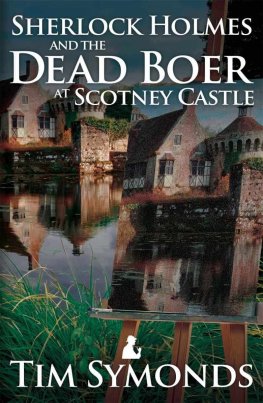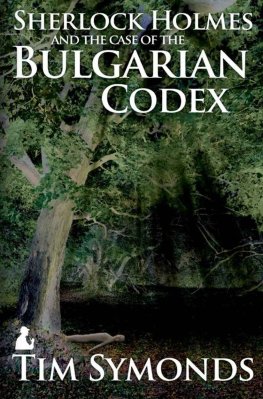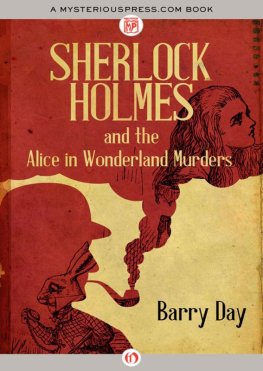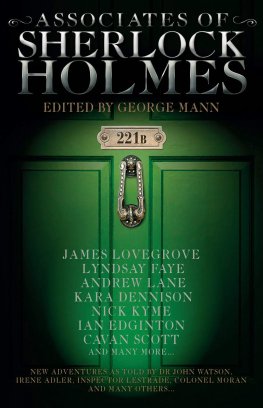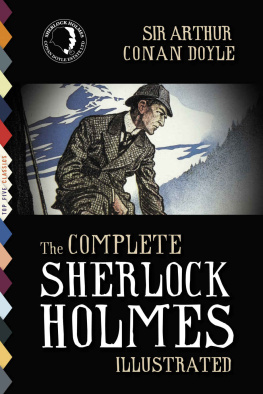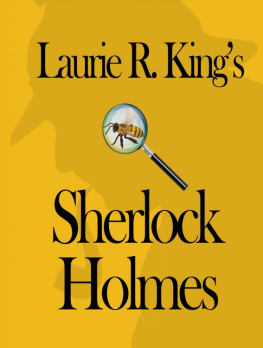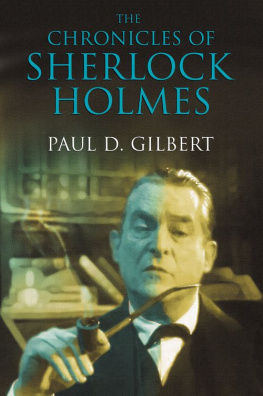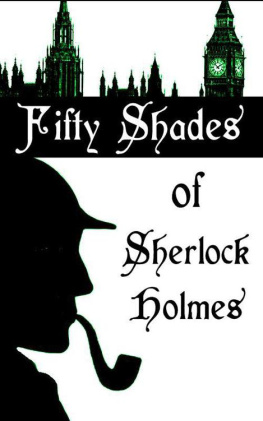SHERLOCK HOLMES IN RUSSIA
Edited and translated
by
Alex Auswaks
With an introduction by
George Piliev

Dedicated to all aficionados of the Sherlock Holmes canon
INTRODUCTION
A Study in Russian
In the official biography of Sherlock Holmes, written by his Boswell and loyal friend Dr Watson, there is only one mention of the great detectives arrival in Russia. In A Scandal in Bohemia we are told that he visited Odessa in connection with The Case of the Trepoff Murder. But in the short passage offered to the reader below, light is cast on certain circumstances of another, longer and less well-known trip, which the Baker Street consulting detective undertook to this distant and mysterious but, nonetheless, wonderful country. Paradoxical as it may sound, this journey was simultaneously virtual and real. The information concerning this visit is fragmentary and most of it has vanished in the mists of time. But the circumstances of this visit do excite curiosity, are not without interest and, surely, are worth a few pages and minutes of time. And so.
12 December 1893. Tuesday. St Petersburg. Let us imagine a clear winters day. Our boots crunch the white snow, the frost crackles and bites, but the cold air is filled with sunshine and laughter. The streets and boulevards of the city of Peter the Great are filled with happy, merry, passers-by. They are all smiles and full of the joy of life, because the New Year is nigh. The New Year in Russia is a very special festival, joyful and unclouded, because the Russian irrational perhaps is as eternal as the fierce faith in it, the belief in perhaps better times, a magic time of change. Why, it is part of nature! Midnight will chime, a New Year will dawn and happiness and success are on their way. In Russia, the first days of the New Year turn the most convinced sceptic into a romantic who, in the depths of his soul, believes that every cherished dream will be fulfilled. Hark to those midnight chimes!
But that will be on 31 December and this is 12 December, the honeyed eve of the festival, the festive awaiting of the festival, the anticipation of which is, at times, more pleasurable than its actual arrival.
It was on such a day that there occurred an unnoticed but a very important event. Sherlock Holmes arrived in Russia.
The immortal private detective from Baker Street, called to life by the inquisitive mind, rich imagination but, also, material needs of a modest Southsea doctor, Arthur Conan Doyle, first appeared before his readers in November, 1886, on the pages of A Study in Scarlet, which appeared in Beetons Christmas Annual for 1887. But the march to immortal fame was to come only five years later. In July, 1891, The Strand Magazine, recently founded by the perspicacious George Newnes, published the first of fifty-six stories (known today as Sherlockiana or The Canon). This was A Scandal in Bohemia. Its success was phenomenal! Humungous! Two or three more months, two or three more stories and the new literary hero had conquered the country, a lasting conquest, perhaps, forever. Two and a half years later his fame reached Russia.
This happened, as you and I now know, on 12 December, 1893. That was the day on which the fortieth issue of a popular magazine, The Star, came out. It was published by Piotr Petrovitch Soikin, a devoted fan of adventure stories. Soikin was the first to introduce Sherlock Holmes to Russias reading public and, having done so, this eminent worthy continued to bring Sherlock Holmess exploits before the public through his magazines Nature & People, as well as The World of Adventure, which were the first to publish every new exploit. From February to November 1909 Soikin brought out in five thousand pages (twenty volumes) The Complete Works of Conan Doyle and followed this up with two additional volumes.
And so, the Russian reader became acquainted, for the first time, with a Russian-speaking Sherlock Holmes in The Speckled Band, when The Star was published.
The new literary hero must have been received well, because the following year saw the publication in The Star of The Adventure of the Beryl Coronet and The Adventure of the Blue Carbuncle. In 1876 the baton passed from The Star to the popular Russian publication Niva (The Field), which hospitably opened its pages to the Red-Headed League and (yet again) The Blue Carbuncle. A year later Niva No. 5 of 31 January 1898, published Professor Moriarty, The Adventure of the Final Problem. On 23 February 1898, in Petersburg hurrah! the first Sherlock Holmes stories in book form, a 143-page collection entitled Notes from the Famous Detective and consisting of The Adventure of Silver Blaze, The Adventure of the Gloria Scott and The Adventure of the Reigate Squires. In December of the same year, as part of a 12-volume free monthly supplement to the Petersburg newspaper Dawn, A Study in Scarlet was published in Russia for the first time. It was translated from German(!), so it wasnt entirely surprising that the heros surname sounded somewhat Spanish, Golmez, and that he lives on Bakkerstrasse and is referred to as Herr.
Such were the steps the great London detective was to take on Russian soil. It didnt spell success as yet. Lets call it a preliminary acquaintanceship, timid, coincidental, but what is coincidence if not a rod thrown at the wheel of fate speeding towards a prepared place in the universe.
And the place made ready in Russia for Conan Doyles brilliant creation was no less enviable than the one in his native land. What had started as a coincidence, an accident, grew to become habitual. Sherlock Holmes made a lasting entry into Russian society.
Amongst those who were first to popularize Sherlock Holmes in Russia were the brothers Panteleyeff, who published a remarkable monthly magazine, The Herald of Foreign Literature. Working for this magazine were the best translators of the time, able to select the best new literature abroad and bring it to the attention (and judgement) of the Russian reading public. This is why, in 1901, as a supplement to their magazine, the Panteleyeffs issued, for the first time in Russia (and very probably in the world), a three-volume edition of the works of Conan Doyle, consisting of most of The Canon available at the time, viz, vol. 1, The Adventures of Sherlock Holmes. Notes; vol. 2, The Memoirs of Sherlock Holmes; and vol. 3, From John Watsons Memoirs of Sherlock Holmes. A large number of the stories in this collection appeared in Russian for the first time, including The Sign of Four. This was, indeed, a unique edition but, in Russia today, there is hardly a library that has a complete set. The translations were the work of M.P. Voloshinova, to whom a very special thank you!
And so, at the start of the twentieth century, as the brilliant era of Queen Victoria was ending, the era of Sherlock Holmes was just getting under way in Russia.
While the 3-volume Panteleyeff edition was coming out in July, F.I. Miturnikoff, a Petersburg publisher, put out a 253-page The Famous Detectives Notes.
And so, by the end of 1901, this is the Sherlock Holmes picture in Russia: six publications in magazine form, two books and a 3-volume set.
Now this was already something, but the major breakthrough was to come in the spring of 1902 when The Strand Magazine


